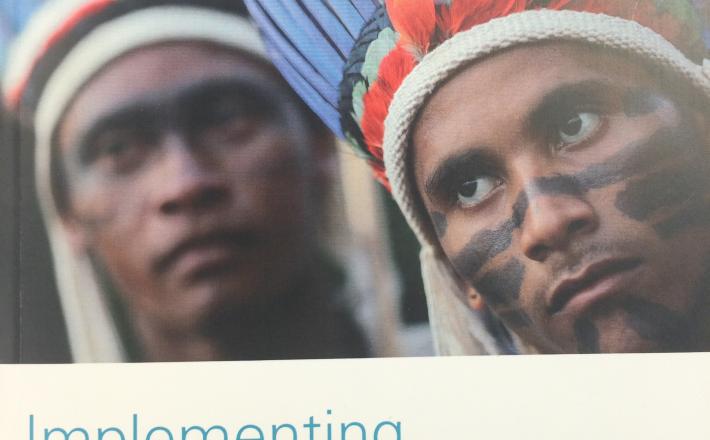Handbook for Parliamentarians: Implementing the UN Declaration on the Rights of Indigenous Peoples
There are approximately 370 million indigenous peoples in some 90 countries throughout all regions of the world. While they constitute 5 per cent of the world’s population, they make up 15 per cent of the world’s disadvantaged. Of the 7,000 languages in the world today, it is estimated that more than 4,000 are spoken by indigenous peoples. Language specialists predict that up to 90 per cent of the world’s languages are likely to become extinct or threatened by the end of the century.
Indigenous peoples are increasingly demanding greater recognition of their rights. Since 1923, when Cayuga Chief Deskaheh of the Iroquois Nation first came to the League of Nations to assert the rights of his people, indigenous peoples have continued to engage with the international community. This has resulted in a number of achievements at the institutional level (United Nations Permanent Forum on Indigenous Issues, Special Rapporteur on the Rights of Indigenous Peoples and the United Nations Expert Mechanism on the Rights of Indigenous Peoples) and at the normative level, the United Nations Declaration on the Rights of Indigenous Peoples (the UN Declaration)The adoption of the UN Declaration in September 2007 was the culmination of more than 20 years of intense efforts and negotiations, and was realized through the solidarity and close partnerships of indigenous people with governments, non-government organizations, academics, parliamentarians and others.

There are approximately 370 million indigenous peoples in some 90 countries throughout all regions of the world. While they constitute 5 per cent of the world’s population, they make up 15 per cent of the world’s disadvantaged. Of the 7,000 languages in the world today, it is estimated that more than 4,000 are spoken by indigenous peoples. Language specialists predict that up to 90 per cent of the world’s languages are likely to become extinct or threatened by the end of the century.
Indigenous peoples are increasingly demanding greater recognition of their rights. Since 1923, when Cayuga Chief Deskaheh of the Iroquois Nation first came to the League of Nations to assert the rights of his people, indigenous peoples have continued to engage with the international community. This has resulted in a number of achievements at the institutional level (United Nations Permanent Forum on Indigenous Issues, Special Rapporteur on the Rights of Indigenous Peoples and the United Nations Expert Mechanism on the Rights of Indigenous Peoples) and at the normative level, the United Nations Declaration on the Rights of Indigenous Peoples (the UN Declaration)The adoption of the UN Declaration in September 2007 was the culmination of more than 20 years of intense efforts and negotiations, and was realized through the solidarity and close partnerships of indigenous people with governments, non-government organizations, academics, parliamentarians and others.